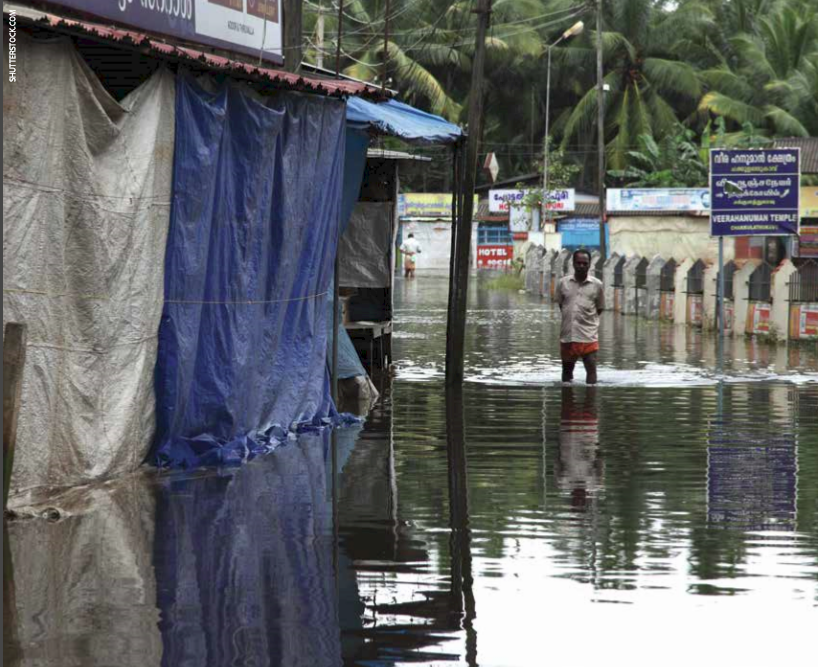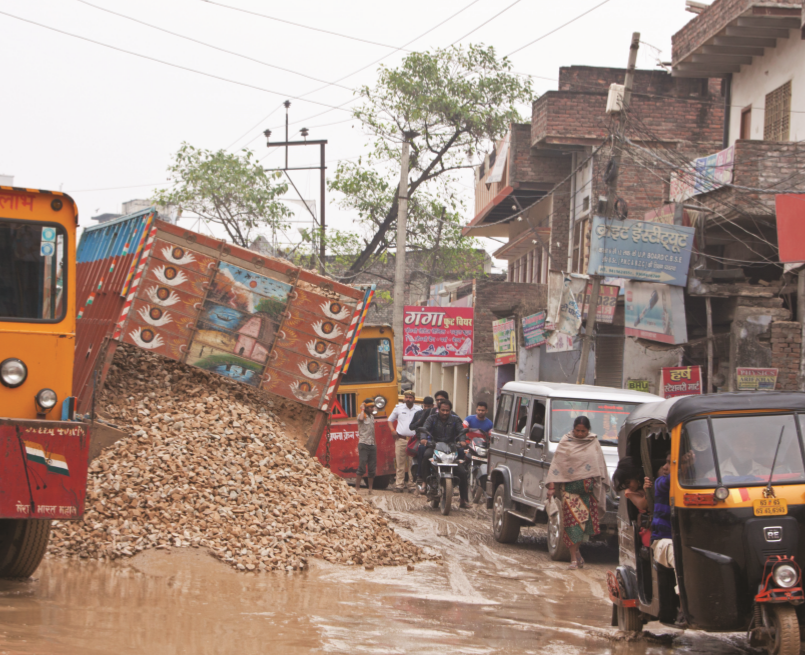 Earthquakes. Fire. Floods. Chemical spills. Conflict. Impacts of these disasters bring to mind loss of lives and livelihoods, disruption to communities and vulnerable populations struggling to recover and cope. The impact of disasters on financial inclusion and the role financial service providers play—or don’t play—in disaster risk reduction is not an immediate consideration when preparing for or responding to such emergencies. However, disaster preparedness and response is exceptionally important in the context of financial inclusion. Countries with higher concentrations of poverty, weak infrastructure and poor public services are more at risk. Experience has shown that financial institutions serving at-risk populations are as vulnerable as their clients to these disasters and crises. While the initial humanitarian and emergency response to crisis is crucial, there is a growing recognition of the value of disaster risk reduction (DRR) strategies in preparing for and thus reducing economic losses associated with disasters.
Earthquakes. Fire. Floods. Chemical spills. Conflict. Impacts of these disasters bring to mind loss of lives and livelihoods, disruption to communities and vulnerable populations struggling to recover and cope. The impact of disasters on financial inclusion and the role financial service providers play—or don’t play—in disaster risk reduction is not an immediate consideration when preparing for or responding to such emergencies. However, disaster preparedness and response is exceptionally important in the context of financial inclusion. Countries with higher concentrations of poverty, weak infrastructure and poor public services are more at risk. Experience has shown that financial institutions serving at-risk populations are as vulnerable as their clients to these disasters and crises. While the initial humanitarian and emergency response to crisis is crucial, there is a growing recognition of the value of disaster risk reduction (DRR) strategies in preparing for and thus reducing economic losses associated with disasters.
In an effort to raise awareness around this important topic, the SEEP Network’s global Disaster Risk Reduction (DRR) Program, funded by the Citi Foundation, seeks to promote more resilient financial services markets in which financial service providers (FSPs) and their clients have the capacity to better anticipate, cope and recover from the negative impacts of disasters. In the program, SEEP promotes the topic of DRR for low income financial services markets at a number of global industry events and through a learning platform featuring case studies, webinars, peer discussions and an online DRR resource library.
These learning outputs highlight the promising practices of organizations working to improve institutional and client resilience through improved internal risk management; forming strong partnerships with humanitarian agencies; establishing protocols for needs-based response for clients in times of crisis and providing innovative loan and insurance products for disaster response.
For example, the Aga Khan Agency for Microfinance and Global Communities, provided tangible examples of actions being taken at the FSP level by First Microfinance Bank-Afghanistan, First Micro-Finance Institution Syria and Vitas Group to ensure business continuity in times of crisis, while maintaining a clear ex ante client focus to ensure that community-based, people-focused responses are applied to support clients’ recovery.
Mercy Corps, Catholic Relief Services (CRS) and Habitat for Humanity India are evolving public private partnerships to bring micro insurance to particularly vulnerable populations in the very distinct markets of Guatemala, Senegal, Mali, Gambia and India. Studies undertaken by Mercy Corps in India and Freedom from Hunger in Burkina Faso have attempted to shed light on the financial needs of vulnerable populations in times of crisis to better understand the types of financial and insurance products needed to help increase client resiliency.
 The International Rescue Committee (IRC) and CRS have focused on the necessity for humanitarian and financial service providers to find innovative partnerships that optimize outcomes of relief efforts and through sustainable delivery channels. CRS has piloted a comprehensive cash preparedness and response plan in Haiti to improve the delivery of cash transfers, through improved cash coordination, pre-positioning agreements, and capacity building of local FSPs to improve their institutional preparedness. In this vein, IRC worked closely with SEEP Network to develop a tool that aids humanitarian agencies to better assess FSP partners capabilities, readiness and effectiveness in administering cash transfer programs.
The International Rescue Committee (IRC) and CRS have focused on the necessity for humanitarian and financial service providers to find innovative partnerships that optimize outcomes of relief efforts and through sustainable delivery channels. CRS has piloted a comprehensive cash preparedness and response plan in Haiti to improve the delivery of cash transfers, through improved cash coordination, pre-positioning agreements, and capacity building of local FSPs to improve their institutional preparedness. In this vein, IRC worked closely with SEEP Network to develop a tool that aids humanitarian agencies to better assess FSP partners capabilities, readiness and effectiveness in administering cash transfer programs.
To support institutions that have not identified disaster preparedness as a priority or are unaware of disaster mitigation strategies for institutional and client resiliency, the Institute for Financial Management and Research (IFMR), with guidance from SEEP, developed and conducted a mapping study to assess India’s DRR preparedness among FSPs. While study findings focused on the Indian context, the mapping process is transferable to other locations, and serves as a useful methodology to understand FSPs’ awareness and preparation for disaster risk mitigation.
These are just a few examples of the excellent work being performed at the cross-section of DRR and financial service provision. For more detailed information about these practices, approaches and institutions, please visit SEEP’s Disaster Risk Reduction Initiative page.
e-MFP Note: The First Microfinance Institution Syria was a finalist of the 2015 European Microfinance Award on Microfinance in Post-Disaster, Post-Conflict Areas & Fragile States which recognised MFIs that provide financial and non-financial services aimed to increase the resilience of affected, vulnerable populations in crisis situations. For more on the topic see e-MFP’s publication Resilience & Responsibility

 Christopher Addison, Program Assistant, Member Affairs and Global Communications
Christopher Addison, Program Assistant, Member Affairs and Global Communications
Leave a comment